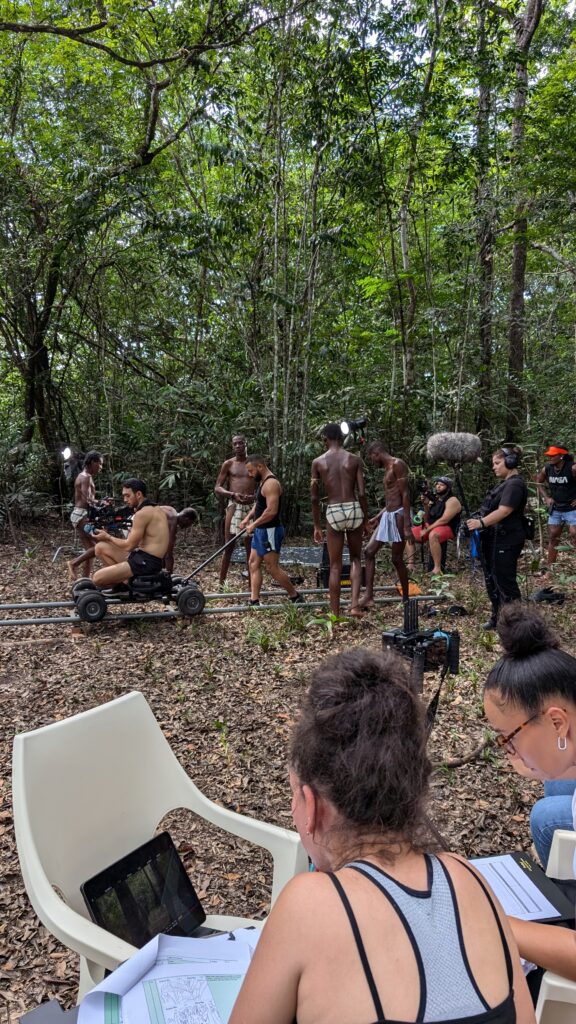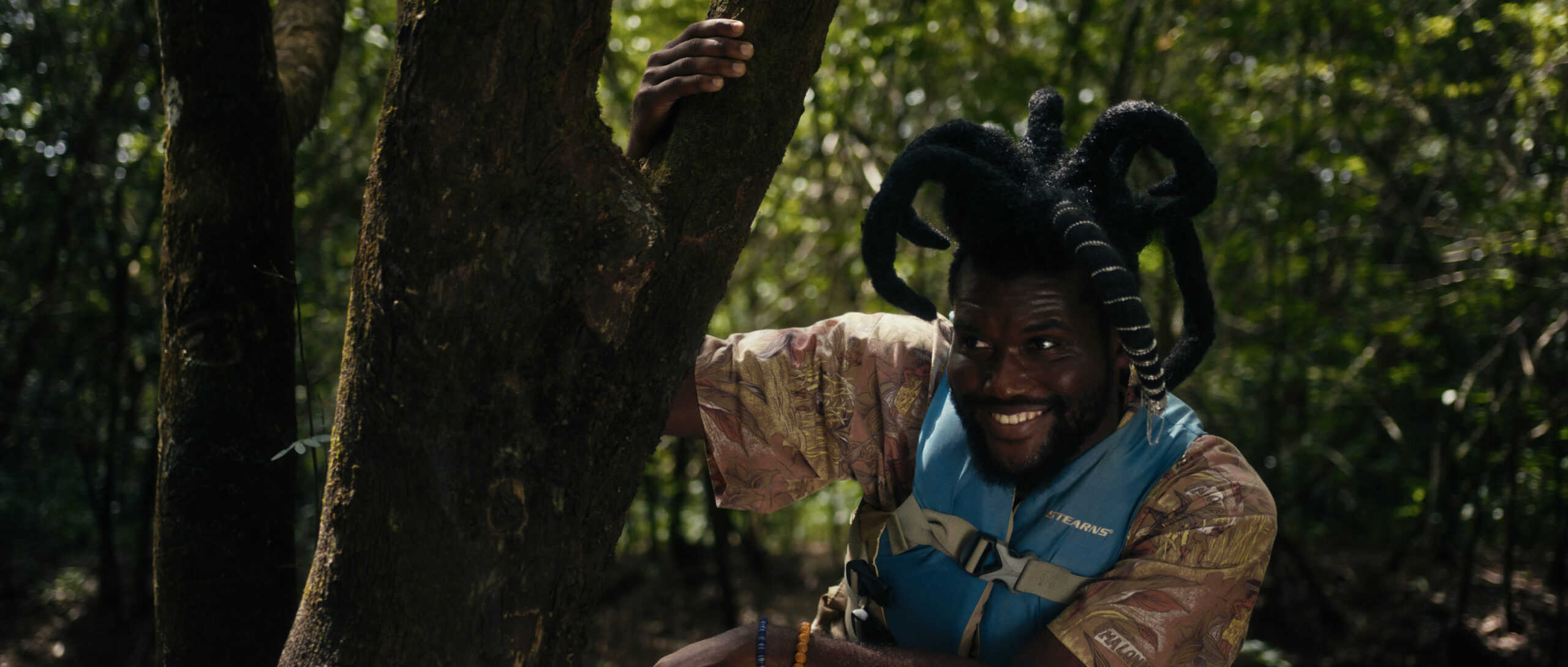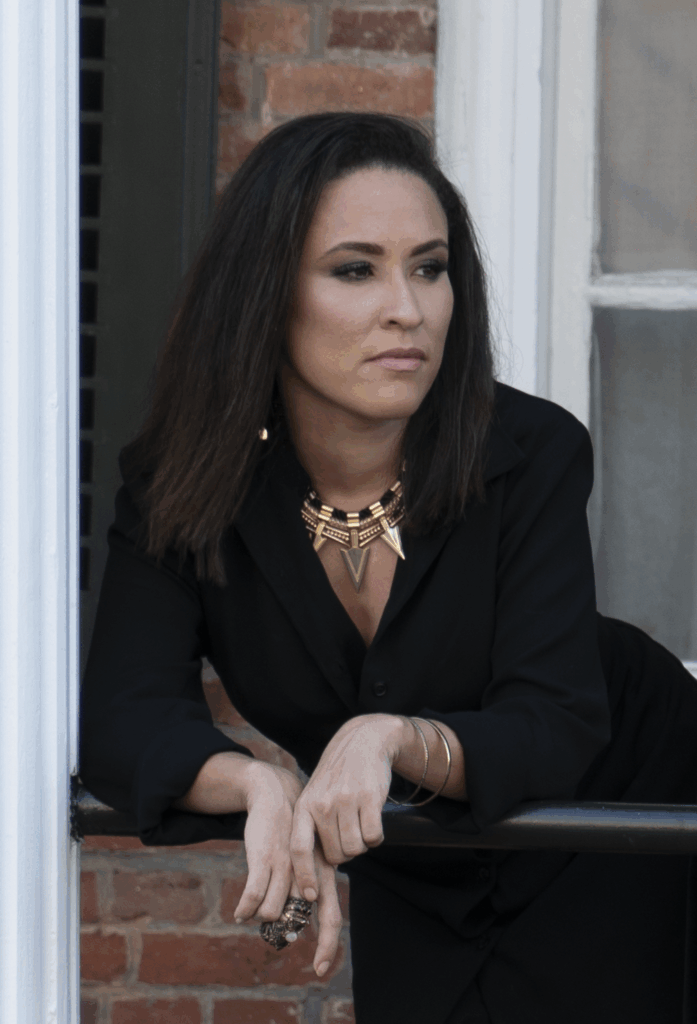In Kim and Fort Buku, two shorts by Surinamese filmmaker Loëlle Monsanto, characters are warned not to enter their house forwards, but backwards. Or else… And in Fort Buku, famous folk spider Anansi, who can change into human form, also makes a brief appearance. Mysterious and Fantastical – all the things we love at Imagine!
Kim and Fort Buku will be screened during our theme special Sranan Tales, November 2nd at 4:45 PM in LAB111. The panel discussion afterwards will see Monsanto, along with co-creators Ronald Marinakis and Don Wei, sharing more about the Surinamese folklore underpinning her work. We already spoke to her briefly about her influences.
Loëlle Monsanto: ‘Western folklore – witches, vampires, werewolves – is also popular in Surinam. But Surinam, or the entire Caribbean region to be exact, also has its own fairy tales. The younger generation is often skeptical. They think it’s superstition. I first noticed this with my parents’ generation. They we told the tales by their parents, now in their eighties or nineties, but don’t engage with them that much. And because the stories are often shared through word of mouth and hardly any visual record exists, I’m afraid they’ll get lost. That’s why I’m driven to capture as many of them as I can in the form of film. With these folk tales, I want to offer a different perspective.’
‘Because the stories are often shared through word of mouth and hardly any visual record exists, I’m afraid they’ll get lost. That’s why I’m driven to capture as many of them as I can in the form of film.’
Monsanto’s work fits perfectly into Imagine’s 2025 festival theme Reversing the Gaze – Reclaiming history with Indigenous Fantastic Cinema, which the Sranan Tales panel is a part of. In Surinam, Monsanto worked as an editor for TV and documentaries. Her web series Sranan Folktales came into being in 2016. In 2019, she moved to the Netherlands to study filmmaking at the HKU (Utrecht University of the Arts). A new episode of Sranan Folktales earned her a Film Fund Wildcard and a contribution from the Cultural Fund. That contribution led to Fort Buku, which was recently screened at both the Netherlands Film Festival and Cinekid.
Is there actually any funding available in Suriname for the type of films you want to make?
LM: ‘There’s no money in Surinam; it has to come from abroad. Projects are set up for which funding is requested from local businesses, but that’s usually very difficult. Especially because the economic situation has worsened enormously over the past six years. For Sranan Folktales, I arranged everything myself, right down to food and drinks. A camera and lighting rental company provided equipment free of charge, and my friends participated.’
Sranan Folktales consists of several short episodes, while Fort Buku is a slightly longer short film. Can we expect a feature from you in the future?
LM: ‘I would very much like to make a feature film based on Surinamese and Caribbean folklore. Of course, there are many Surinamese people in the Netherlands, so you can also tell stories that take place here. It was wonderful to see that the screening of Fort Buku at Cinekid was packed with children of Surinamese descent.’





